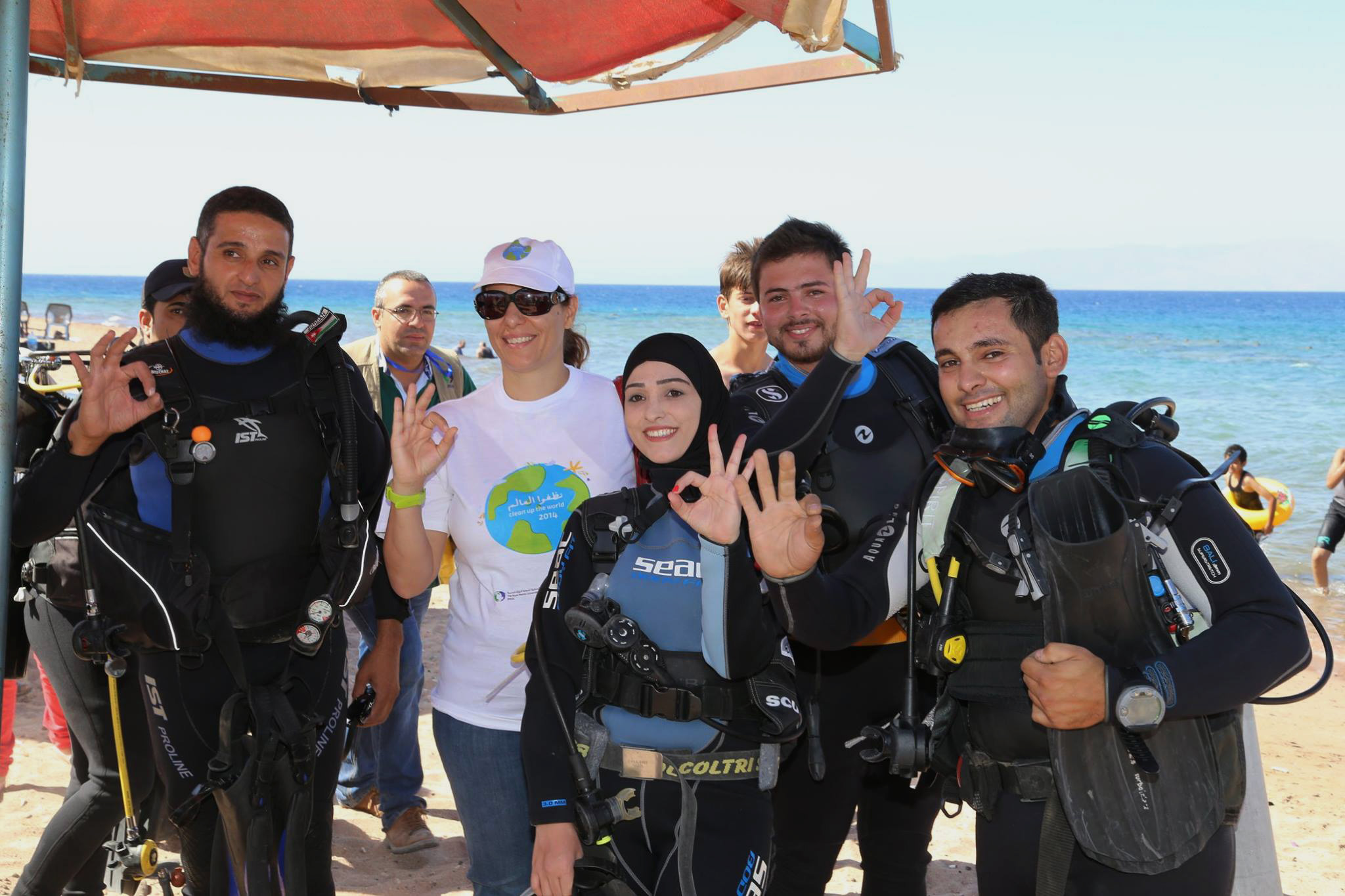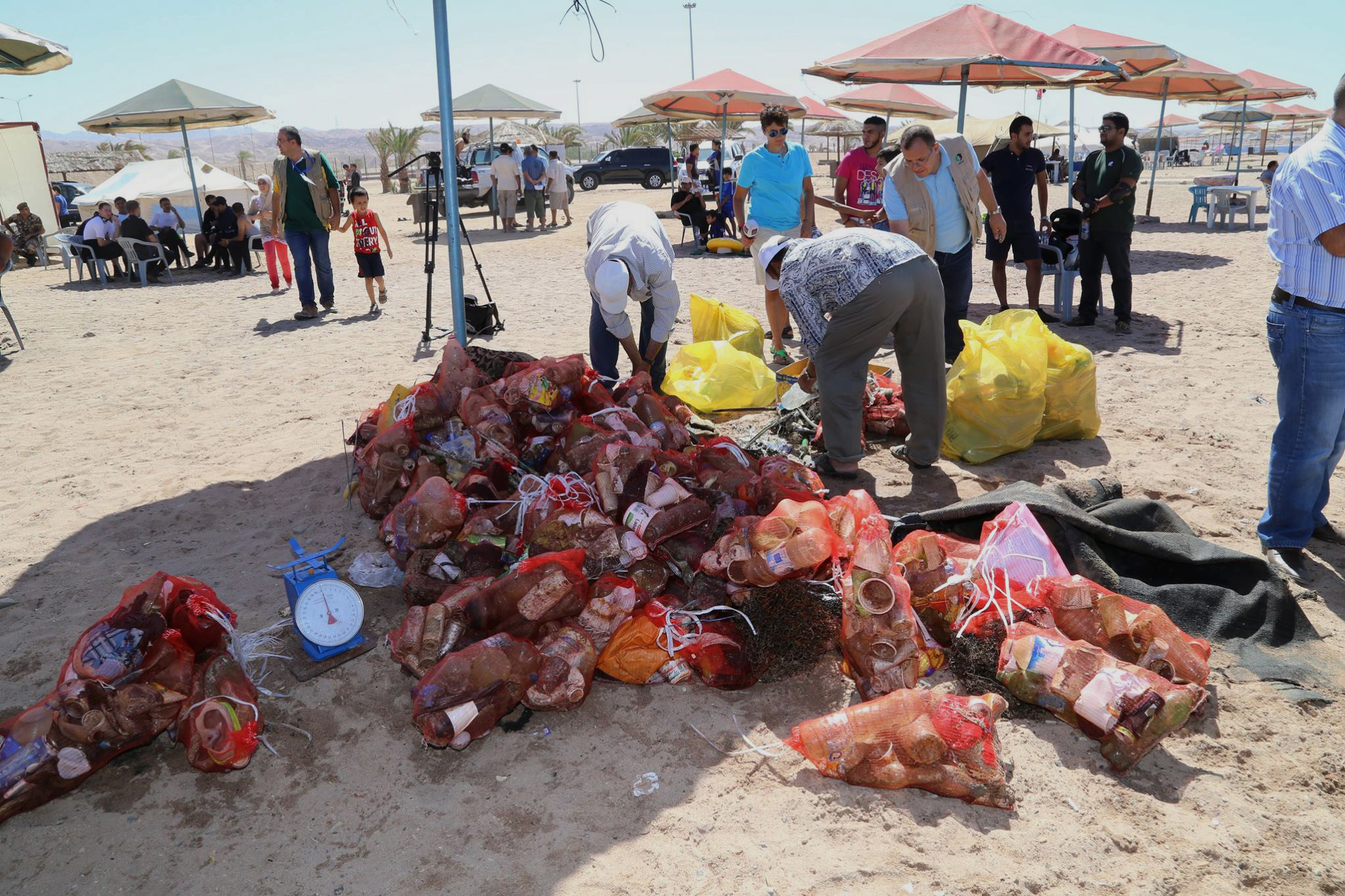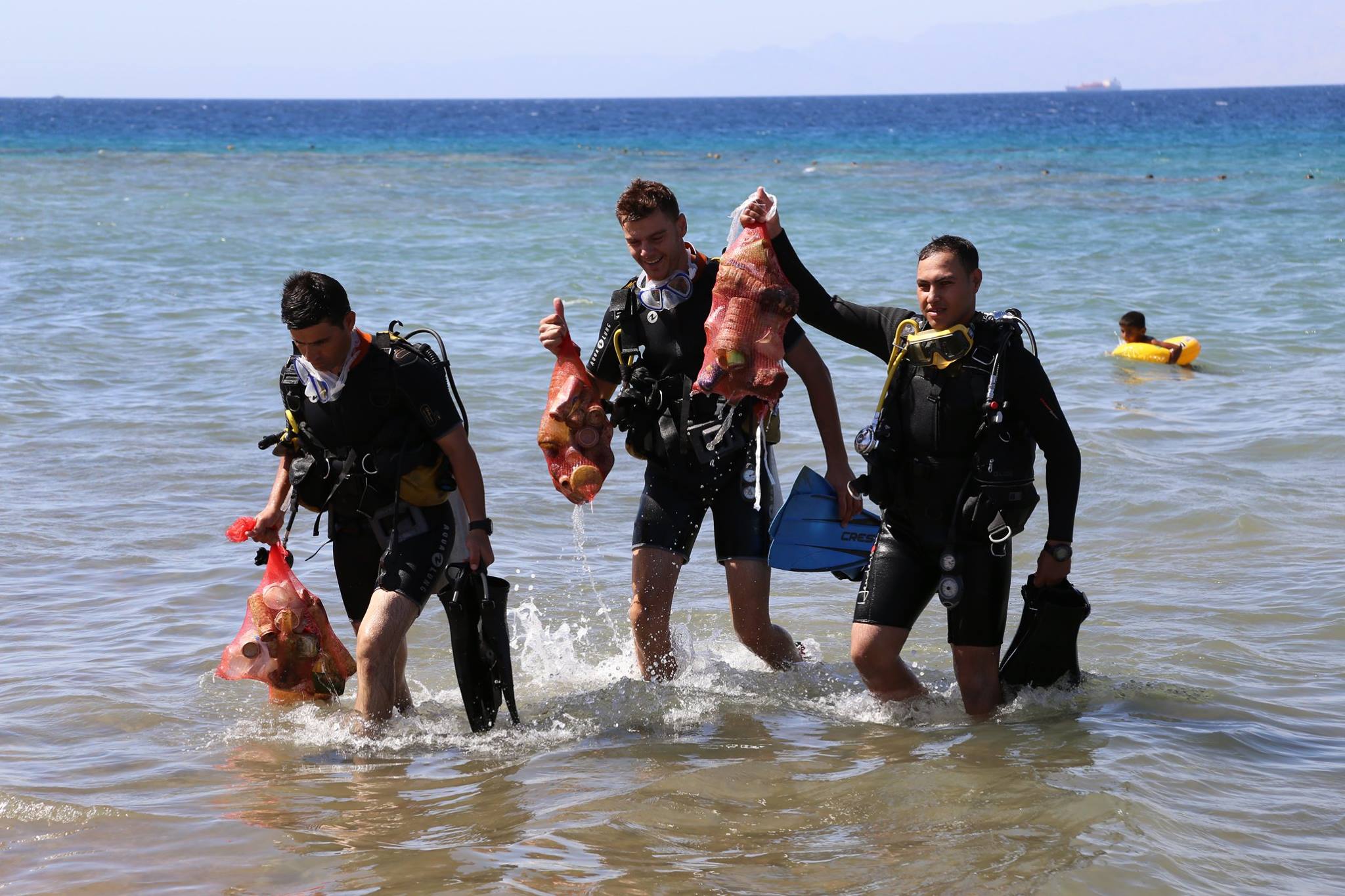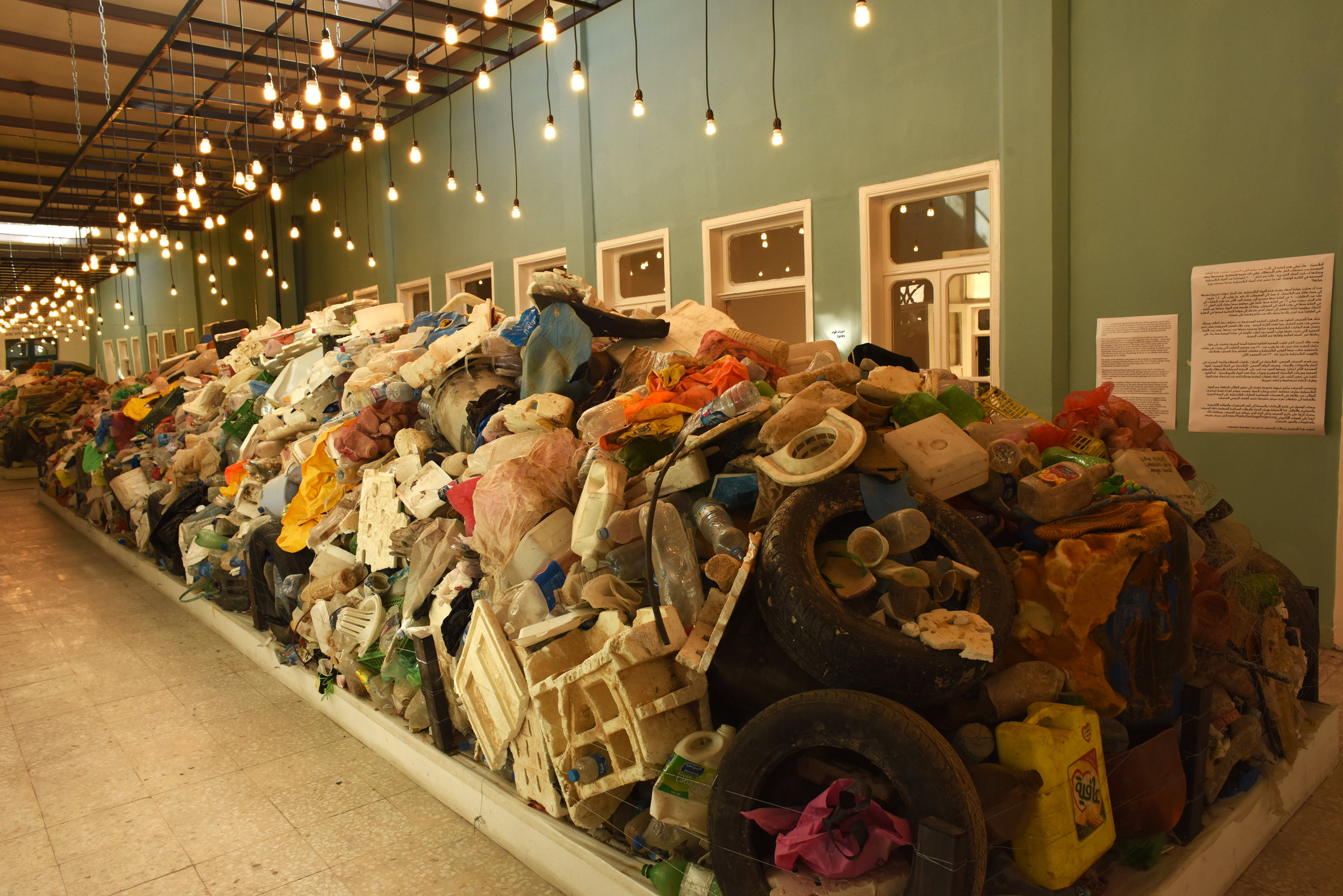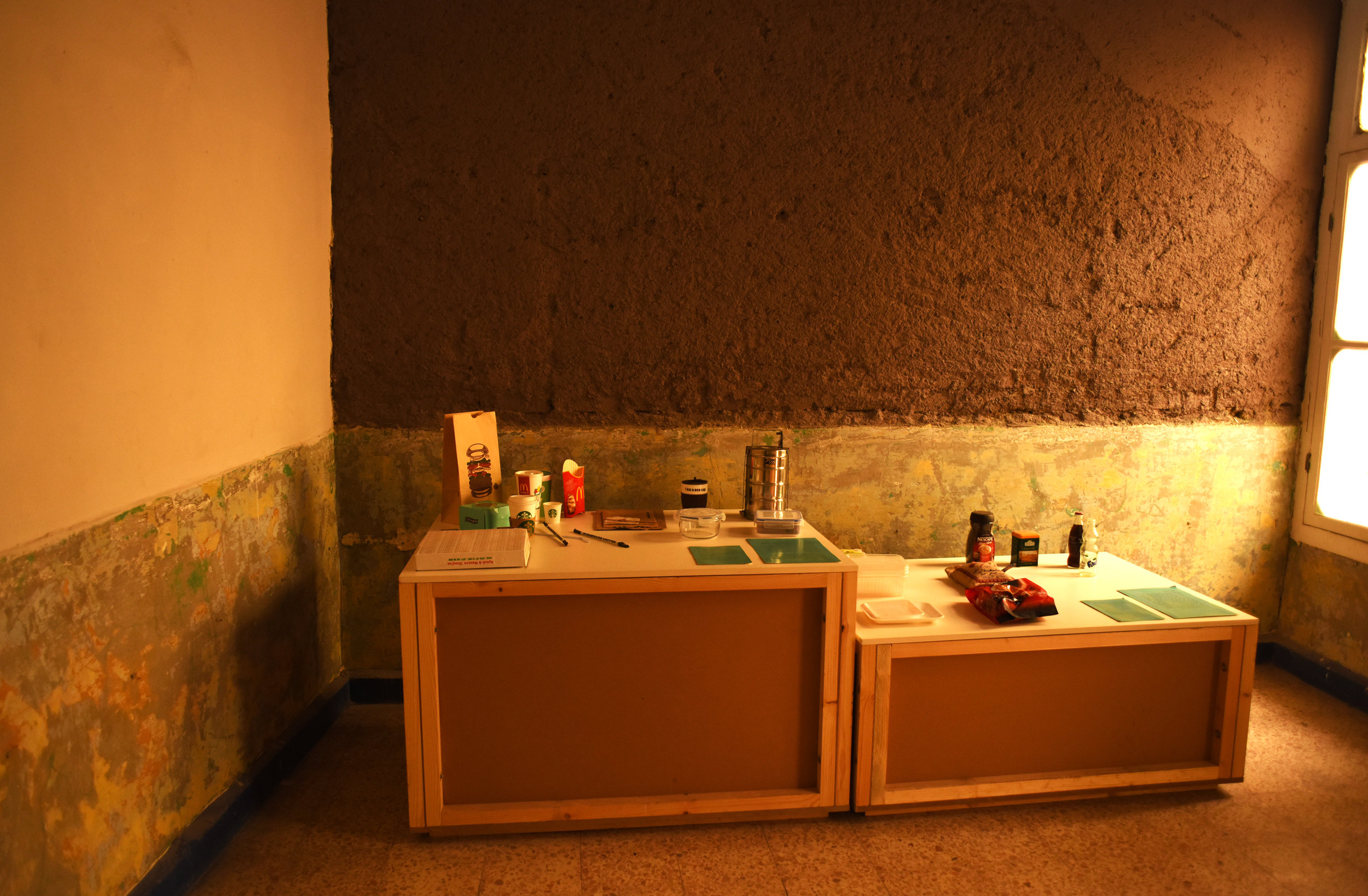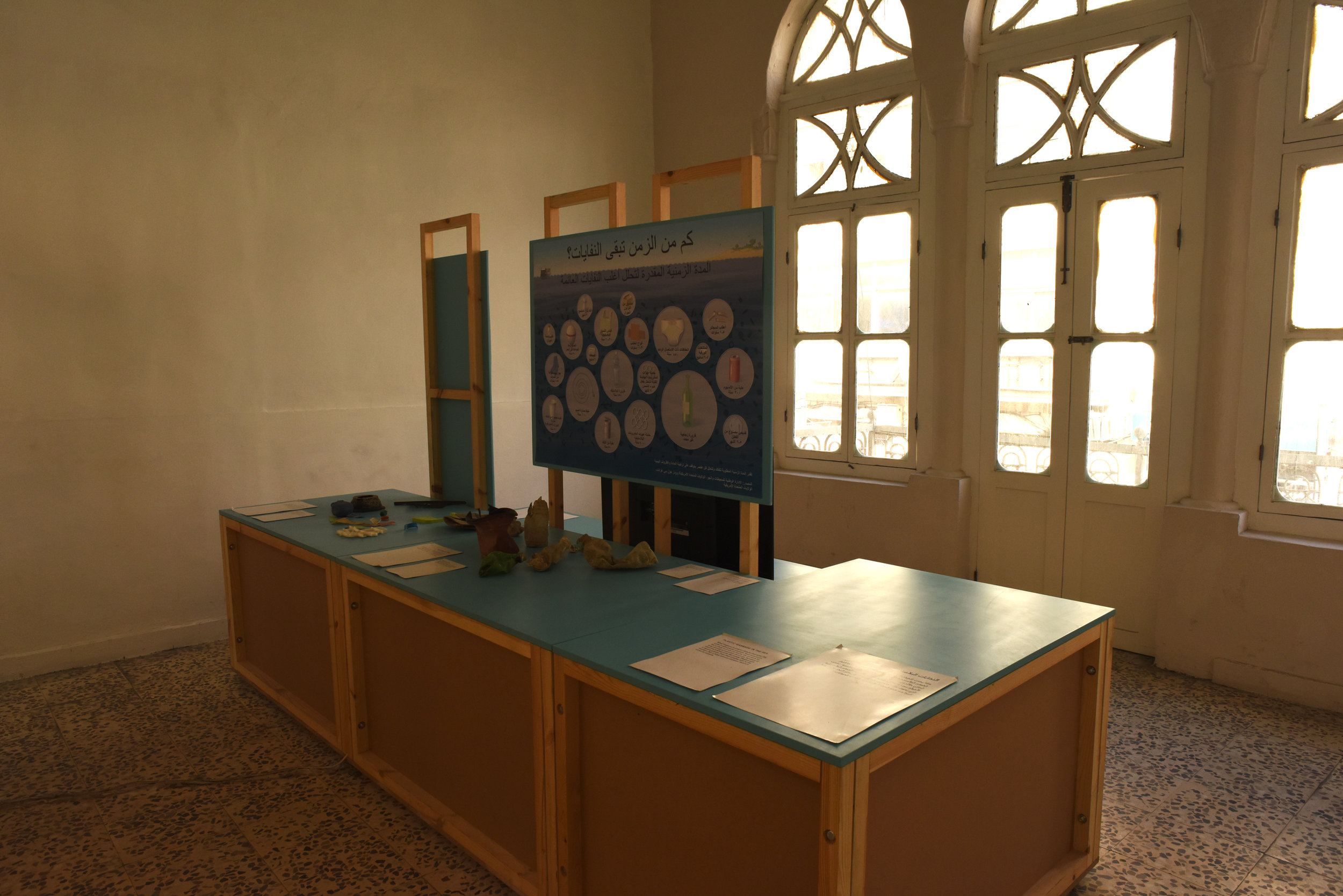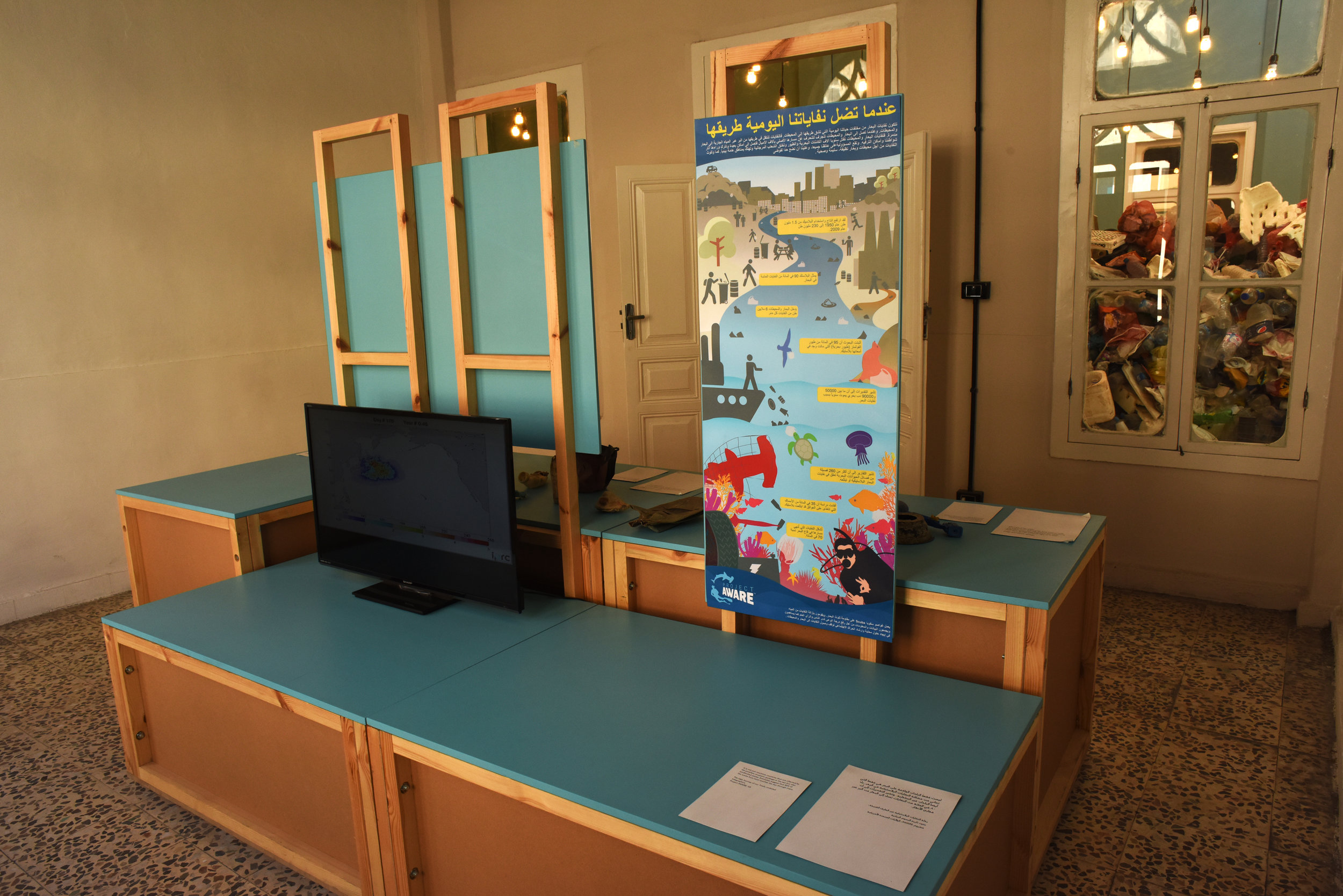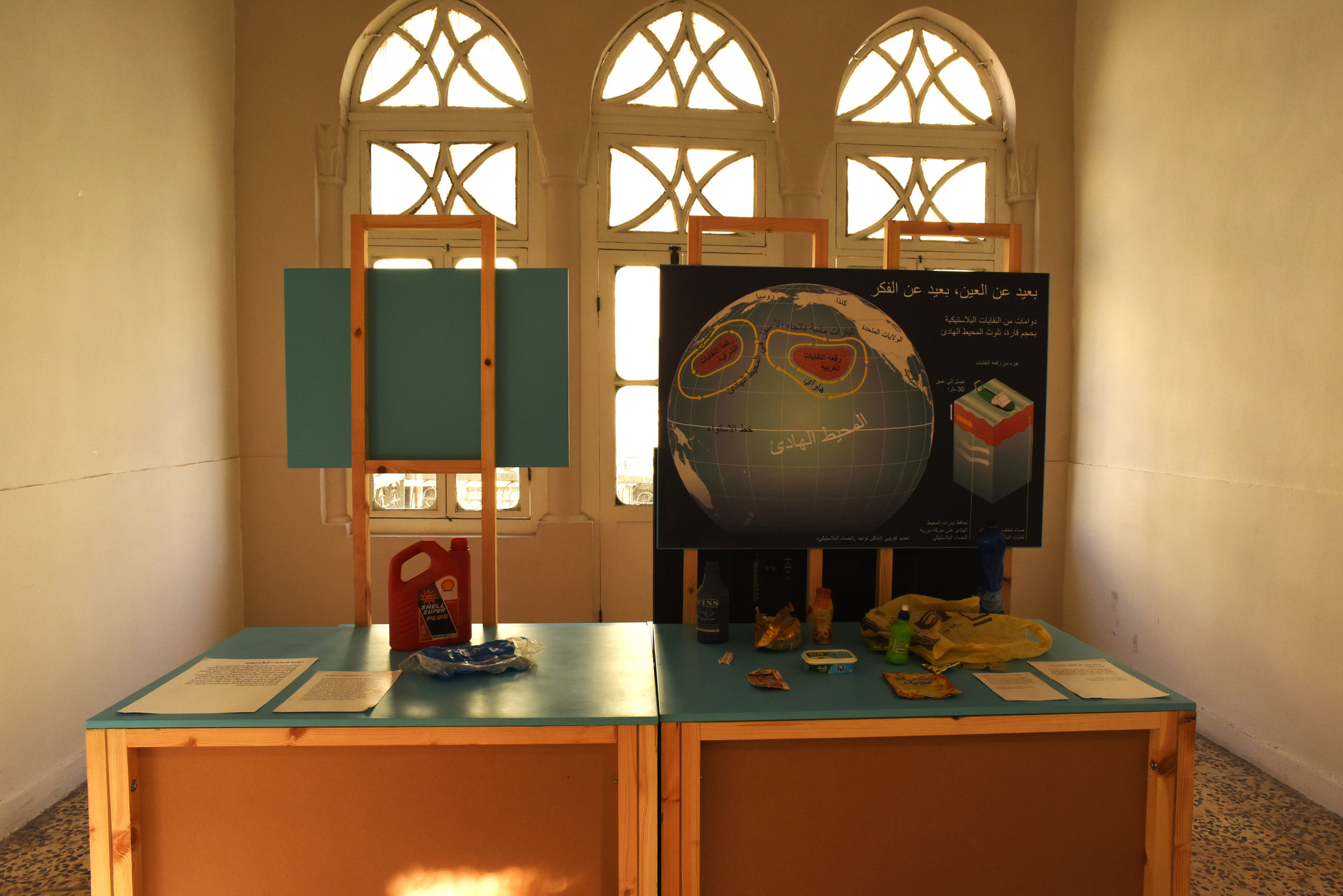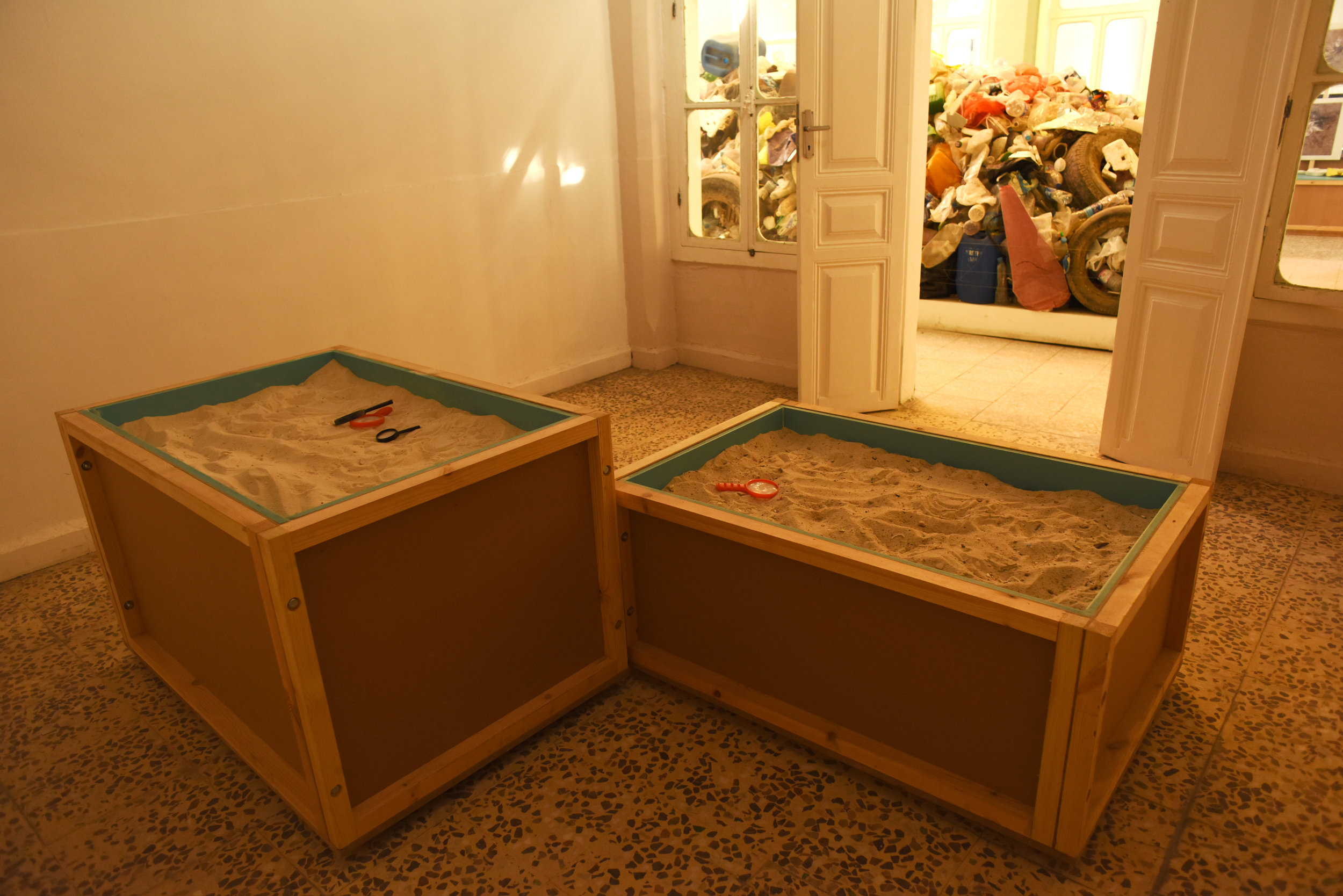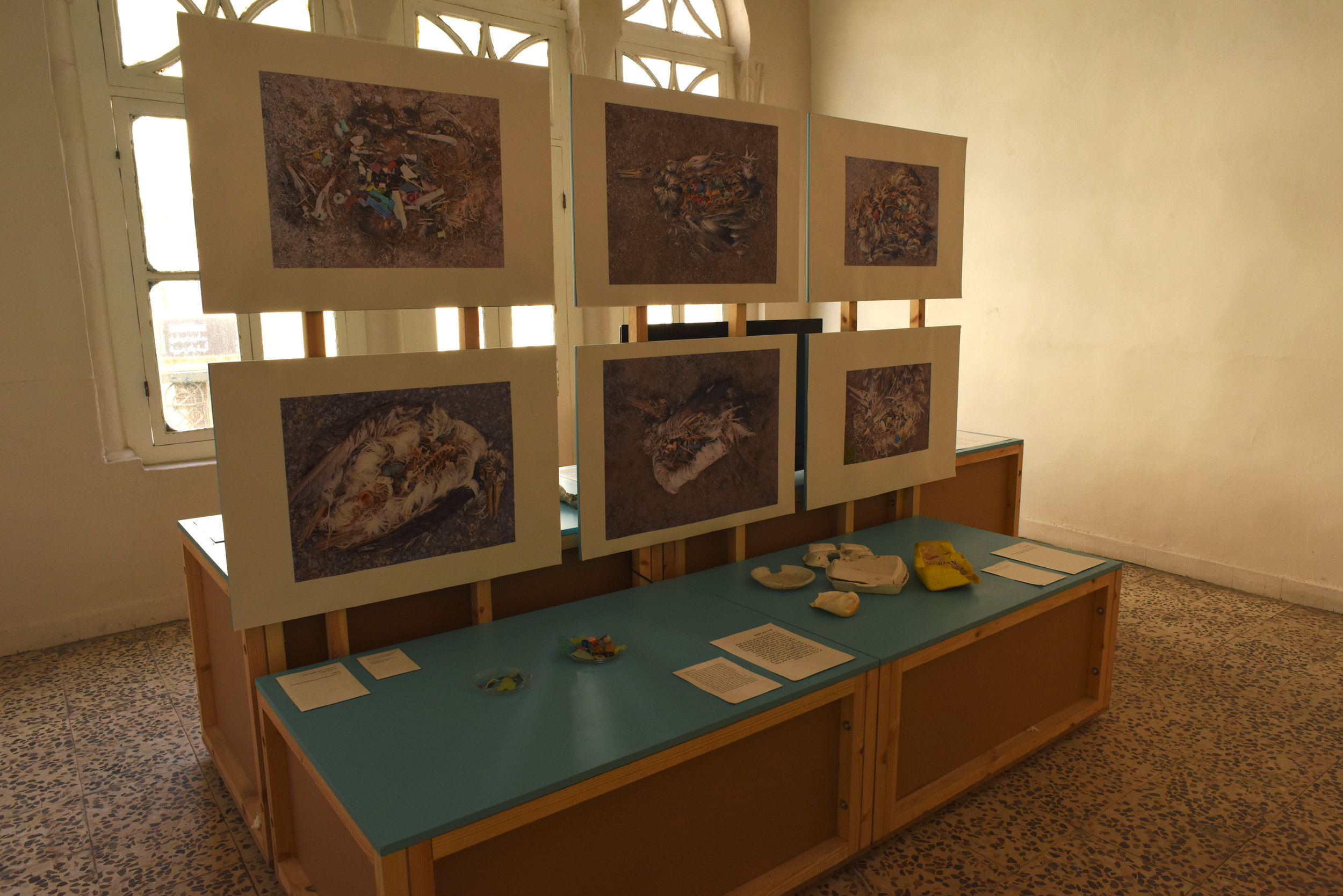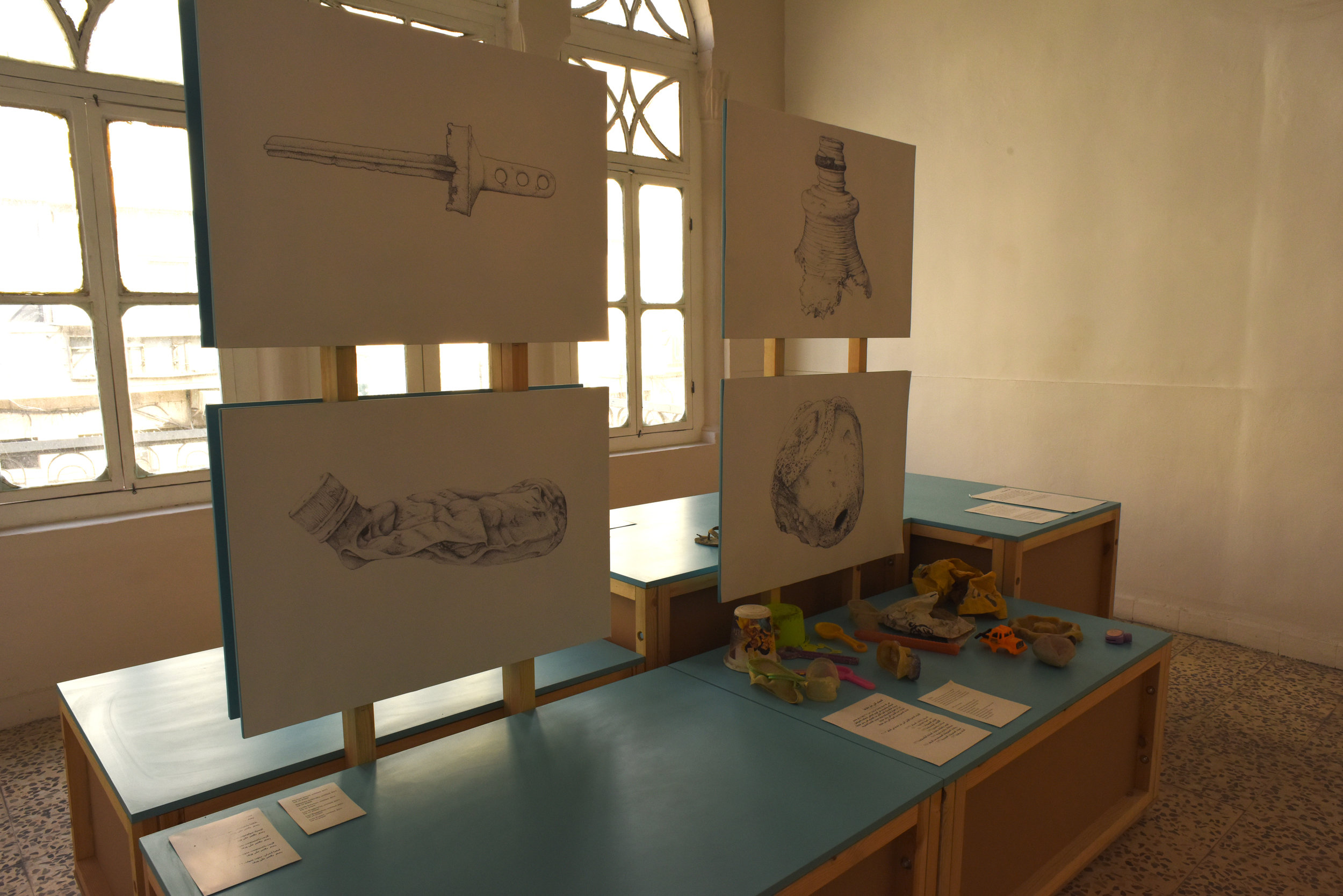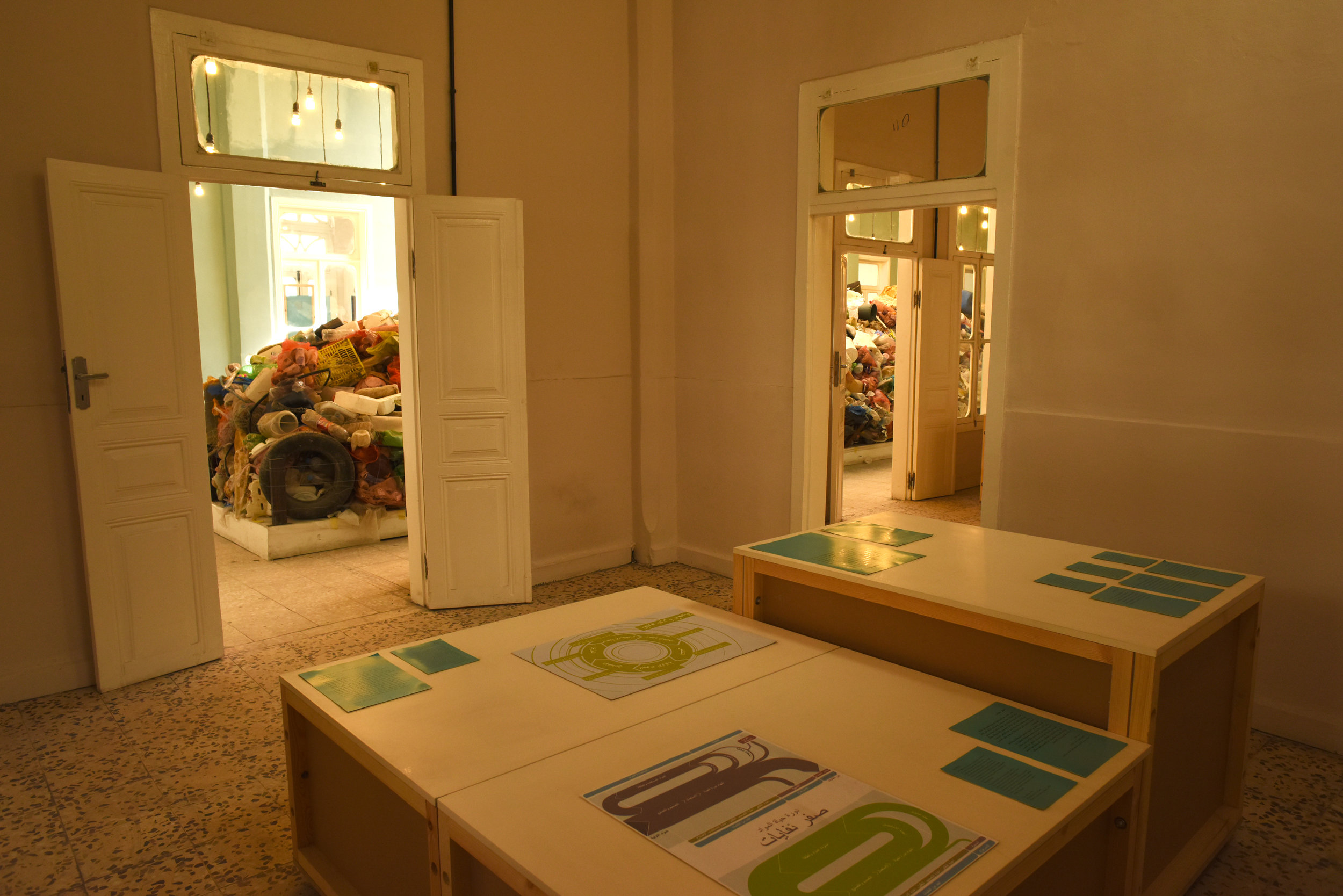The Royal Marine Conservation Society of Jordan
amman, jordan
15 November 2014 – 31 January 2015
For the Arab exhibitions, all marine debris was collected with cleanups locally. A special attention was given to the education program.
Littering in the ocean is a growing problem worldwide and has serious impact on the marine habitats and its associated species and in consequences; it has effects on human health and safety, navigation, and the economy as well. However, and since Aqaba coastline is the only maritime gateway in Jordan it faces daily several major problems like the industrial use, port activities, wastewater and traditional human impact, as over fishing, improper diving attitudes; like stepping on coral and feeding fish, and careless anchoring. But a major problem is the garbage and littering occurring at the Gulf of Aqaba.
Despite the relatively small water body at the Gulf of Aqaba, it hosts an extraordinary marine diversity and it’s considered to be an important gateway of regional maritime.
At the exhibition JREDS aims to show in a practical way the linkage between products we daily use, our behavior regarding solid plastic garbage and the growing plastic littering of the world’s oceans in addition to its negative effects. We also aim to stimulate a movement of awareness about the environmental challenges our marine life faces.
We will take the visitor through a journey of a series of interactive, experiential and informative stations that would stimulate and provoke the visitor and lead him to a certain conclusion. Also, the exhibition will hold support events e.g. children’s activities and a forum to reinforce its message to the public. In addition to the exhibition and its requirements, the space will encompass a series of stations, each discussing a certain educational content.
The visitor shall go on a journey ‘through’ the different stations in sequence as part of the exhibition, which will be included to the main «Out to Sea? The Plastic Garbage Project» exhibition tour. Envelopes include: educational playing kids zone (to include toys and interactive games), library, film screening room, shop, cafe, entrance, exit, and experiential secondary exhibition space (to include several artists’ contributions for kids in plastic). There is a possibility to have different routes for each age group. The last station will stimulate and provoke visitors to take action and become more proactive towards the environment.
